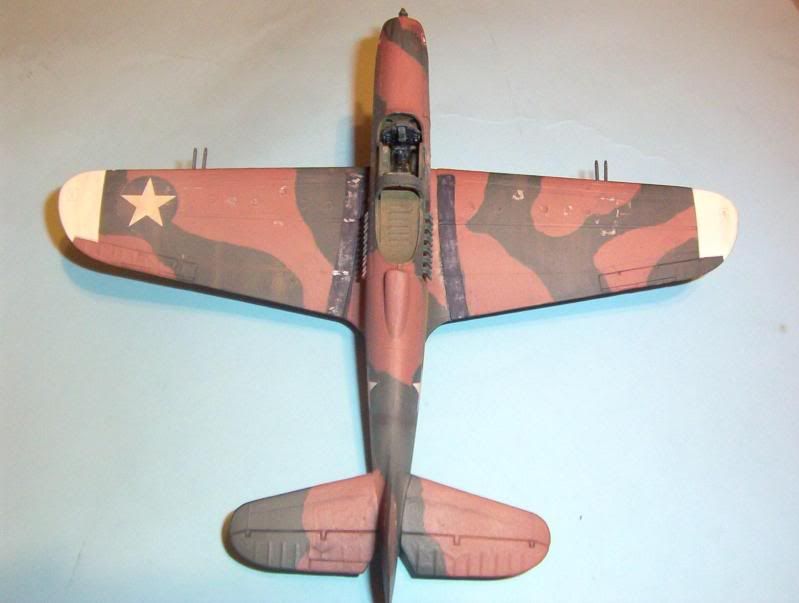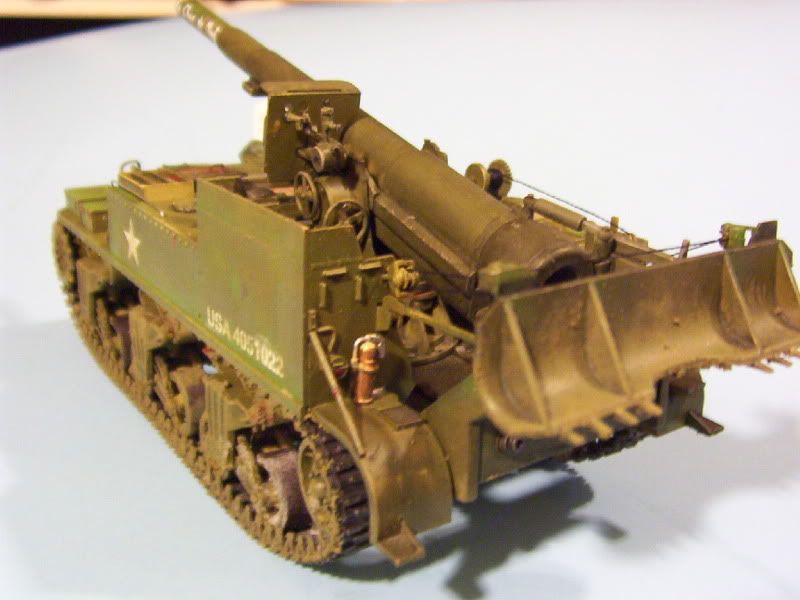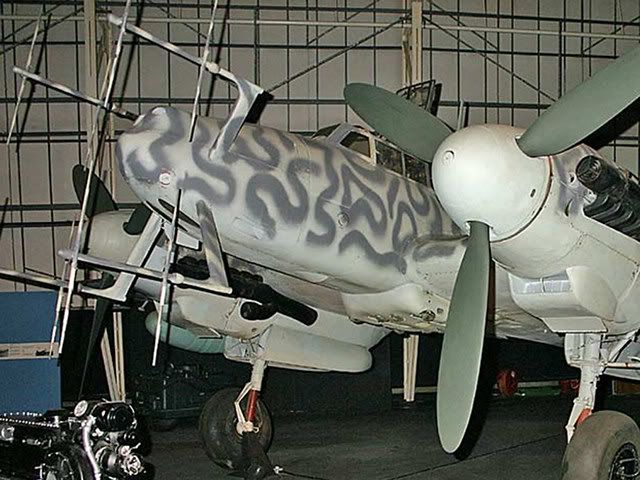Depending on the color, Testor's makes some damn-good paint pens too... I did an A-26 in Gloss Black using one and was amazed at the quality of the finish.. No brush-strokes because no bristles, and remember to paint in ONE direction only...
For brushing, I prefer Model Master enamels, 100%... But you don't need an airbrush if you're doing a simple one or two color (even three with some really careful masking)camouflage finish. Rattle-cans are the way I go... Like for a three-color US Navy camouflage of Non-Specular Sea Blue over Intermediate blue, over White on an F6F, or for a USAAF B-17F/G, Olive Drab over Neutral Grey camouflage fits the bill...
Eduard P-400 with rattle-can Model Master's OD over Wal-Mart "Tru-Color" grey primer, and red from rattle-can Krylon. Wash and silver-chipping has been applied, but not Testor's Dullcoat for the pastels :

Below, the Monogram P-39 in Testor's MM Afrika Mustard and Dark Green over Neutral Grey. This was a bit more time-consuming, but still, no airbrush needed.

I just shot the same W/M Grey Primer underneath, same as the other 'Cobra, then sprayed the white on the wing-tips. I then masked those and the grey, then shot the top overall with the Afrika Mustard. Once the Mustard was cured, I masked the Mustard areas and shot the Dark Green on top... Tehn a gloss-coat for decaling and washes, then a dullcoat for the pastel "Paint-Fading"...
I detail-painted the wing-walks with a Flat-black paint-marker, added some chipping and scuffing with a brush and silver.
Obviously, metallics for a NMF work too.. I like Krylon Premium Silver Foil for unpainted aluminum, and plain ol' Testor's MM Aluminum for aluminum-laquered finishes, like on a P-51D/K ... Krylon metallics, while robust (and almost chrome-like in brightness and reflectivity) , need a full 48 hours to cure if you don't want aluminum-powder on fingers though... Also, don'y spray clear gloss OR clear flat on it either.. The clear isn't needed for decals to cling well, and the flat will negate all the "shine"...
Don't get me wrong, I can airbrush quite well, but I choose not to if it can be avoided... It all depends on the camouflage scheme I want... Some, with heavy, mottled areas like on the fuselage sides of some WW2 Luftwaffe aircraft, almost require an airbrush (Note almost). Stencils, made using a paper-punch and "Post It" notes or frisket-paper work pretty good too... Just mount the paper mask about a 1/4-inch off the surface for soft edges and shoot the rattle-can rioght over it. being careful not to overdo it.... Takes practice to get both distance and shape of the holes right, so keep a sheet of styrene or an old wreck around for tesing..
Armor can be 100% brush-painted and even if you DO leave some brush-marks, stragetically-placed mud, air-recognition flags/panel-markers, or tools and persoanl gear will go a long way in hiding them..

Brush-painted (Testor's MM Olive Drab FS 34087) number 1911.. Track pads and roadwheel tires are Testor's Rubber, 1183 with a few drops of Panzer grey mixed in.
When I first started airbrushing, about 30 years ago, I still used a lot of rattle-cans, but paint-matches were always difficult. I then hit on the idea of using a cheap Badger (like 9.99 in 1981) to apply custom-mixed colors, or decanting rattle-can color for those I couldn't match. It still sprayed like a rattle-can, and the finest line I could get was about 3/8ths-inch... This was still quite good, as I still masked anyway....
It wan't until just a few years ago that I went and invested in a higher-end airbrush, a Paasche H45630, and a Testor's "Blue Meanie" air compressor... (one setting, "ON" or "OFF"...)
I use it occasionally, but I still see no reason to forego using rattle-cans. I use it only for paint-schemes that call for a fine-line of "freehand" camouflage, like that found on a German Nightfighter in two-tone Grey..

...and for painting interiors of aircraft like the B-25, B-17 and other multi-engined bombers wih one single color that requires an even coating.